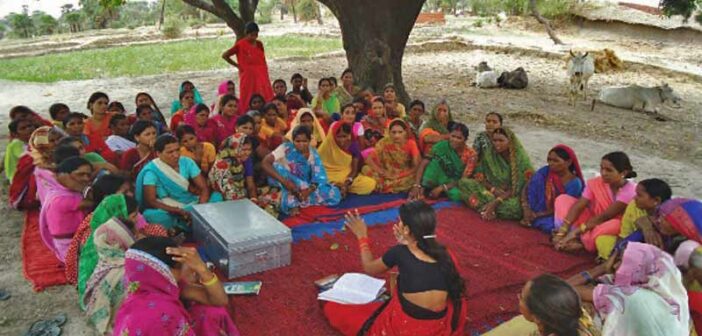TL;DR The Deendayal Antyodaya Yojana – National Rural Livelihoods Mission (DAY-NRLM) has mobilised over 10 crore rural women households into 90+ lakh SHGs across India, promoting women-led institutions, livelihoods, and rural empowerment. Despite a COVID-related dip in SHG formation, participation has rebounded, and the mission continues to strengthen rural women.
Context
Recently, a delegation from the Ethiopian government visited India to learn about the Deendayal Antyodaya Yojana – National Rural Livelihoods Mission (DAY-NRLM), one of the world’s largest community-driven livelihood programmes. Implemented by the Ministry of Rural Development, DAY-NRLM has mobilised over crores of rural women households into more than 90 lakh Self-Help Groups (SHGs) across the country. The mission focuses on strengthening women-led institutions, enhancing livelihood opportunities, and promoting social and economic empowerment in rural areas. Its success has made it a model for inclusive and sustainable rural development, attracting global recognition and interest. In this story, we look at how the mission has progressed in the last five years and the impact it has made.
Who compiles this data?
Data on DAY-NRLM is compiled by the Ministry of Rural Development, Government of India. It is available on the mission’s official website through the dashboard and reports section. In addition, consolidated figures and progress updates are also shared through Parliament responses and official press releases.
Where can I download clean & structured data related to SHGs?
Cleaned, structured, and ready-to-use datasets on DAY-NRLM SHGs, such as date of formation and number of SHGs at village level and the representation of minority social groups for each state can be downloaded from Dataful.
Key Insights:
- The number of SHGs formed under DAY-NRLM fell during the COVID-19 years, from 9.77 lakh in 2019–20 to 6.02 lakh in 2020-21 and then recovered in the following years. Household participation showed a similar trend, with around 1.07 crore households in 2019-20 and 61 lakh in 2020-21. As of February 2025, cumulatively, 10.05 crore rural women households were mobilised into more than 90.90 lakh SHGs.
- In 2019-20, approximately 11 households were mobilised for every SHG formed. By 2023-24, this ratio increased to roughly 14.1 households per SHG. This suggests a trend towards larger group sizes.
- Uttar Pradesh, West Bengal, Maharashtra, Bihar, and Madhya Pradesh account for approximately 57% of the total SHGs and Households mobilised nationally during this 5-year period considered.
- As per official data reported in August 2025, a total of 1.48 crore women had declared themselves as Lakhpati Didis, successfully meeting the initiative’s criteria of earning a sustainable annual household income of at least Rs. 1,00,000 for a minimum of four agricultural seasons or business cycles.
- Ten states contributed to nearly 80% of the Lakhpati women.
Why Does It Matter?
DAY-NRLM demonstrates how large-scale, women-focused community programs can transform rural livelihoods. By promoting financial independence, skill development, and social empowerment, it reduces rural poverty and serves as a model for other countries like Ethiopia seeking inclusive, sustainable development.
Key numbers
- 10.05 crore women households in 90.9+ lakh SHGs (as of February 2025)
- New SHGs fell to 6.02 lakh in 2020–21, then rebounded
- 1.48 crore women became Lakhpati Didis
- 5 states account for ~57% of SHGs/households; 10 states account for ~80% of Lakhpati women



